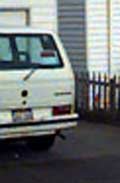I’m a compulsive reader. My whole life I’ve rarely let much time go by without some book as my constant companion. I try to keep my website here in sync with what I’m reading, but I’ve failed miserably over the last year. I think two books were listed the whole year, while I likely plowed through 4x that number. Right now it still lists “Fiasco“… which was an excellent read. I’ve been through a couple of other books since – I just forgot to update my site here. So in penance, here are a few mini-reviews of stuff I’ve read of late. I will update the site soon with the book I am *actually* reading at the moment.
One of the most profound books I read this past year was “A Nation Of Enemies” about Chile under Pinochet. I have a partially written essay about it stashed away in my “drafts” database, so you’ll have to wait for that.
“The Looming Tower” is a fascinating read concerning just about everything we know about Al Qaeda, right up to 9/11. It’s origins in Eqyptian Islamic thought, the principle players, their lives, their philosophies, their methodologies, etc. Right alongside that is a study of the intelligence community, specifically the CIA & FBI, and their continual stumbling over each other due to their basic, fundamental differences of philosophy. The CIA (subject of the book I’m reading now) had always been externally facing and saw the world as a whole, and understood how US Law was irrelevant in many respects in remote places of the world. I may or may not agree with that stance, but the book does detail how the CIA solution to Al Qaeda was to just kill it’s leadership. This was attempted a few times under the Clinton administration, but did not succeed. It was stopped on all but one occasion by the FBI, whose “law & order” mentality conflicted deeply with the CIA’s “kill ’em” plan of action. The FBI wanted to prosecute and punish, which of course requires evidence, due process, etc. They created elaborate schemes to capture bin Laden and extradite him to stand trial for the embassy bombings and the USS Cole. The delays, along with an administration change lead to neither happening. The events of September 11, 2001 therefore were not really a surprise to those in the intelligence community. They knew who it was, why, and in a lot of ways what and when it was going to happen. In hindsight perhaps the CIA’s option would have been a lot more effective and less expensive, but then again we would have been enjoying another decade of peace and prosperity had they did what the CIA suggested.
That leads us to “Fiasco”. To those that feel that the Bush Administration was a united front concerning Iraq, this book contrasts that sharply. On the one side you have the Department of Defense (Rumsfeld, Wolfowitz, et. al.) + Cheney, forging ahead with rosy projections – minimal troop commitments, self-funding effort through oil revenues, “They’ll greet us as liberators!” and PowerPoint based sales pitches. On the other hand you have the State Department asking tough questions … and getting no answers… from anyone. The Military of course does what the American military does best, Logistics… all the while ignoring Strategy, Intelligence, Counterinsurgency, post-war infrastructure, sealing the borders, not to mention exit strategies. They assumed the State Department had all that stuff worked out. What resulted was of course, a Fiasco. A fascinating read, I highly recommend it.
I’ve also read the classic text “This Kind of War” by T. R. Fehrenbach, which covers the Korean War. Fehrenbach is a blunt, plain spoken man with a keen awareness of Military History. Korea is a largely forgotten conflict but it set the precedent for post-atomic ground wars, both politically and militarily. An excellent read though do not expect a coolly detached historian’s view. An interesting aspect of reading this book for me is firing up Google Earth and having a look at the actual terrain being described. I wholeheartedly suggest anyone reading a book about any sort of military conflict do this simple thing. Terrain is a significant part of how battle is played out, and seeing the relief (Korea is an exceptionally hilly place) truly puts a lot in perspective. The simplistic map in the book of “The Gauntlet” run by the 2nd Division on the Sunch’on – Kunu-ri Road, November 30th 1950 is what lead me to look at the actual terrain. From that moment I was hooked.
At the moment I’m reading my Xmas gift from John Welch (Thanks John!), I’ll try to summarize it once I’m done.


